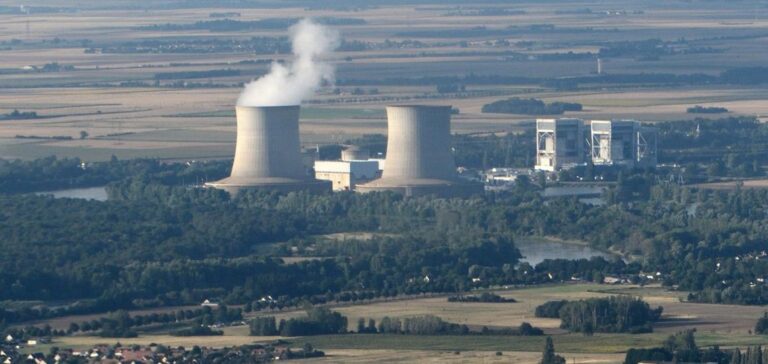On the banks of the Loire River, reactor No. 2 at the Saint-Laurent-des-Eaux nuclear power plant has stopped delivering megawatt-hours to accommodate an army of workers at the service of a gigantic construction site: the time has come for a “complete check-up” to enable it to produce for another ten years, with climate change in its sights.
In the engine room, a large cathedral where electricity gushes out of the steam at the end of the turbo-alternator, the operators are busy amidst scaffolding and monumental boneless parts. For this giant “technical control”, the plant will host up to 2,700 employees simultaneously, instead of the usual 1,000.
“Right now, the plant has a higher level of safety than when it was commissioned” in 1983, assures Sylvie Richard, director of the “Grand Carénage”, the vast program launched in 2015 by EDF to modernize and extend the life of the plants beyond 40 years. Ten of EDF’s 900 MW reactors have successfully completed their fourth 10-yearly inspections. The one in Saint-Laurent, on the same level, began on January 21 and will last 7 months.
The stakes are high for these 40-year-old power plants, the oldest in the 56-reactor fleet: obtaining an operating license from the French Nuclear Safety Authority for another ten years. To achieve this, 17,000 operations are planned, for an investment “five times higher than during the last periodic review” in 2013, emphasizes the site director, Nicolas André.
The reactor first undergoes three regulatory tests: in addition to the inspection of the stainless steel vessel from every angle, a hydraulic test of the primary circuit and a test of the concrete containment, which prevents the escape of radioactive products to the outside in case of an accident, are planned. “The enclosure is inflated with pressurized air to check its tightness,” explains Arnaud Besnard, maintenance coordinator in the reactor building.
Also on the agenda: major maintenance work such as the replacement of the turbo-generator rotors and the addition of additional cooling systems and a corium stabilizer, to recover an accidental leak of molten fuel under the reactor.
Next project, the climate
The vast construction site of the extension is at the heart of the Grand Carénage, whose cumulative cost of the first (2015-2021) and second (2022-2028) phases amounts to 66 billion euros. “It’s the biggest industrial program since the creation of EDF in 1946,” summarizes Sylvie Richard.
In its first phase, 800 modifications were made, based on national and international feedback, in particular from the Fukushima disaster in Japan in 2011. They include the construction of backup water and power capabilities to deal with a power failure that would threaten the cooling of the facility. “It’s a great asset for continued operation,” says Sylvie Richard.
The government has decided that, in addition to the construction of at least six new EPR2 reactors, the reactors will have to be extended beyond 50 years if possible. “It’s no longer a taboo, other countries are doing it,” says Sylvie Richard, referring to the United States. EDF is already working on the program for the fifth ten-yearly outage for the plants that will reach 50 years of age in 2029. “We have called it a ten-year visit to the climate change” because “it will include important scenarios that will have to demonstrate the performance of our equipment”, emphasizes the Director of the Grand Carénage.
EDF assures that it is not starting “from scratch”: “all the power plants have undergone significant changes to resist aggression – floods, snowstorms, tornadoes”, it adds. “We are also improving the performance of the cooling systems of the plants”, which represents the third largest water consumption in the country (12%) and the major issue posed by global warming in nuclear power.
In a report dated March 21, the Cour des Comptes called on EDF to “strengthen its research” on these systems to make them more “water-efficient”, noting that “no innovation” had been implemented on the existing fleet and, even more, “the absence of any marked evolution” for future EPRs.
On Thursday, President Emmanuel Macron promised investments in nuclear power “to save water,” without putting a figure on them.






















